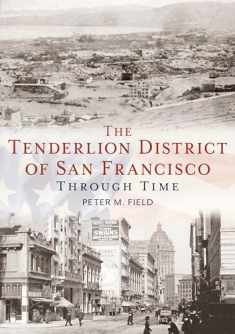
The Tenderloin
Book details
Summary
Description
America once had many Tenderloin neighborhoods. Today, San Francisco's Tenderloin is the last. Surrounded by Union Square s posh retailers to the north, upscale Hayes Valley to the west and the Twitter/Mid-Market tech scene and affluent SOMA to the south, San Francisco's Tenderloin remains a primarily low-income, ethnically diverse neighborhood in a city of vast wealth. How has it survived?
Randy Shaw answers this question in his long awaited new book. Shaw, who has worked in the Tenderloin for 35 years and published four prior books including The Activist's Handbook, traces the mystery of the Tenderloin s survival from its post-quake rebuilding in 1907 through today. What he discovers challenges longstanding assumptions about urban neighborhoods. Not only does the Tenderloin show that residents can act to avoid the inevitability of urban gentrification, but also that low-income communities can enjoy the benefits of neighborhood improvements without these becoming a harbinger of displacement.
The Tenderloin is a must read for anyone concerned about the future of urban neighborhoods. It offers a new model and roadmap for neighborhood improvement that defies common assumptions about how big cities can maintain economic diversity in the 21st Century.
Named for a part of the city where bribes bought police the highest-grade beef, San Francisco's Tenderloin is the last of many such neighborhoods once found across the United States. Shaw shows that for nearly a century the Tenderloin has fought against the establishment time and time again. And often won. Shaw shows how those outside the mainstream independent working women, gay men, screaming queens activist SRO hotel tenants and many others led these struggles. Once known for girls, gambling and graft, the Tenderloin was also fertile ground for the Grateful Dead, Miles Davis, Dashiell Hammett and other cultural icons. The Tenderloin is the untold story of a neighborhood that persisted against all odds. It is a must read for everyone concerned about the future of urban neighborhoods.
"A lively and opinionated history of one of the most fascinating neighborhoods in the world, San Francisco's Tenderloin, by a man who has been on its gritty front lines for 35 years. Even if you think you know this unique urban time capsule, Randy Shaw's book will surprise and inform you." --Gary Kamiya, author of Cool Gray City of Love: 49 Views of San Francisco
"Anyone interested in cities, and how to resist gentrification and displacement, should read Randy Shaw's new book." --Peter Dreier, author of Place Matters: Metropolitics for the 21st Century
"A tremendous book. A history book with great zest, and above all a continuous feeling for the neighborhood. With a much broader sense of what San Francisco has meant in the society at large." --Paul Buhle, author of Bohemians: A Graphic History
"For those resisting gentrification or fighting to insure that its benefits are more equitably shared Shaw s book will be an invaluable guide. It illustrates how persistent and creative grassroots organizing can challenge and change urban re-development schemes designed for the few, rather than the many." --Steve Early, ZNET


We would LOVE it if you could help us and other readers by reviewing the book
Book review




